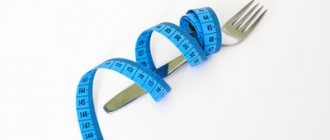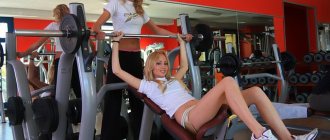Pregnancy and childbirth inevitably lead to stretching of the intimate muscles and slight displacement of organs in the pelvis. The reason is the constant pressure of the uterus, which only increases with each trimester. After the baby is born, the mother should think about how to quickly return the body to its previous shape. You can speed up the process and improve sexual health with the help of Kegel exercises (after labor, they can only be started with the permission of a doctor).
Dr. Kegel developed a special complex for the treatment of women who suffered from urinary incontinence during coughing, exercise and laughter. The system is aimed at increasing the tone of the perineal muscles. In practice, it has been found that regular contractions help get rid of not only incontinence, but also other problems. Around the world, millions of women practice Kegel exercises after childbirth. The effectiveness of this technique is confirmed by a large number of positive reviews, both from patients themselves and from doctors.
Why do you need Dr. Kegel exercises after childbirth?
The benefits of specially designed exercises to strengthen the vaginal muscles are invaluable. By practicing regularly, you can achieve the following results:
- quickly return the uterus to its prenatal form or as close to it as possible;
- prevent prolapse of organs in the pelvis or help them return to their physiological position;
- train the muscles of the vagina - it will narrow slightly and become more sensitive. Such changes will change your sex life for the better;
- reduce the risk of inflammatory diseases of the genitourinary system;
- accelerate the cleansing of the body from postpartum discharge;
- reduce the risk of developing urinary incontinence;
- increase blood circulation in the pelvis, which indirectly helps prevent hemorrhoids.
Before you train the muscles, the vagina should return to normal slightly. During the examination, the doctor will assess the condition of the woman in labor and give recommendations. Indications are individual and depend on how the birth took place, whether there are other diseases that cause complications, etc. Indications for training: planning pregnancy and the preparatory prenatal stage, recovery after the birth of the baby. It is also useful to perform a set of exercises for the prevention and treatment of pelvic organ prolapse, urinary and fecal incontinence, hemorrhoids, and inflammatory processes.
Rules for playing sports during lactation
The right attitude
Exercise only when you are in the right mood for it. You should not exercise when you are very tired or upset about something (except when exercise lifts your mood).
When to start playing sports
How to get rid of envy of your friends who quickly lost weight after giving birth?
Of course, by starting to play sports as early as possible, but taking into account the characteristics of your condition. Experts recommend starting to do exercises with light loads within a day after giving birth. This is the so-called restorative gymnastics. If the birth was successful, naturally, and there were no significant ruptures, bleeding or other complications, you can safely begin gymnastics already in the maternity hospital. Even before you get out of bed, you can do exercises to strengthen your abdominal muscles (a nurse at the maternity hospital helped me do these exercises).
Basic gymnastic exercises (squats, body turns, bending, arm swings) can be started two weeks after the birth of the baby, when bleeding from the vagina decreases. During this period, you can also increase the complexity of exercises for the abdominal muscles and begin exercises to strengthen the chest.
The exception is women who had a caesarean section and who had severe tears. In such cases, consulting a gynecologist about playing sports is simply necessary.
How long should you practice and how often?
It is enough to exercise three times a week for half an hour a day to feel the results.
In addition, breastfeeding itself, due to the production of milk, already helps a woman burn up to 500 calories per day.
Best time to exercise
It is recommended to exercise before breakfast. Also, remember that it is best to exercise immediately after feeding your baby. In this case, even if a certain amount of lactic acid is released in the body, before the next feeding it will already decrease (within two hours).
How to exercise
Sports need to be done in stages. You can increase the number of repetitions of one exercise by one every day (it was easier for me to do this).
Increased and prolonged exercise can cause the quality of your breast milk to deteriorate (the body produces lactic acid, which gives breast milk an unpleasant sour taste) or its quantity to decrease.
Additional accessories
Dumbbells, weights, exercise machines - all this is not recommended for women during lactation. Such a load is too strong for the woman herself during the postpartum period. In addition, exercising with dumbbells can affect the quality and quantity of breast milk.
A month after giving birth, I tried doing a little weight training with dumbbells, but quickly realized that it was too difficult for me. And, as it seemed to me, there was less milk in the breast after such stress.
Fitball and hoop, on the contrary, can be used. A hoop helps very well to make your waist slimmer (tested from my own experience).
If there is less milk
This can happen due to the fact that during exercise you lose too much fluid through sweat and drink little. Therefore, you should drink more after exercise. Compote made from dried fruits (raisins, dried apricots and apples) is best suited for this purpose. Also try to reduce the load somewhat.
How to quickly strengthen your vaginal muscles with exercises?
The main condition for achieving results from Kegel exercises after labor is regularity. Several approaches are performed daily. The first positive changes will become noticeable after about 5 weeks. They begin to train with 4 daily approaches, gradually increasing the number of training sessions to 7 each day.
The cycle consists of several variations of muscle contractions, each of which is repeated 10 times to begin with. Beginners are recommended to hold the position for 4 seconds, after a few days increase the time to 5, then to 10 seconds. First, all tasks from the complex are performed from a lying position. This way the muscles of the vagina and perineum are better felt. Subsequently, the posture changes to sitting and standing. The convenience of these workouts is that they can be performed anywhere.
A prerequisite is to empty the bladder in advance, otherwise inflammatory processes in the ureters may be provoked. Breathing must be kept even and calm.
How and when should women perform Kegel exercises after childbirth?
Your doctor will tell you when to perform a set of Kegel exercises after childbirth. If no contraindications are found, then the sooner the better. Training is not only allowed, but also necessary. In addition, when sitting at home for a long time, it is not difficult to allocate 10–15 minutes, especially since you can do this while washing dishes, rocking a baby, while walking with a stroller, etc. There is no need for special clothing, equipment or visiting the gym . Regarding nursing mothers, there is a recommendation - do not train on a full stomach and it is better after the breasts have been emptied (after feeding the baby).
When can you exercise after giving birth?
We would like to warn you right away that it is simply not possible to lose weight quickly after giving birth. Pregnancy is a serious test for the body, associated with a lack of vitamins and minerals, hormonal changes and other changes. Therefore, the recovery period will require at least six months, or even more. Dramatic weight loss at this time is not only unlikely, but also harmful. Your metabolism may be disrupted, your milk may disappear, and health problems may arise.
Usually, doctors allow you to exercise 5-6 weeks after the birth of a child, if the birth took place naturally and without complications. Women who have had a caesarean section can begin physical activity only 8 weeks after the birth of the baby. But here, too, it is important to understand that lifting weights and training too intensely will not bring benefits. The best exercise after childbirth is intense walking. The more you walk with your baby, the faster you will get back into shape.
If you ran before the birth of your baby, then after giving birth you can safely return to your workouts. Of course, in the case of a cesarean section, it is necessary to wait until the suture is completely healed. If three weeks after the birth of your baby you feel great, then you can easily practice light jogging. At the same time, the load should be minimal so that your body adapts to the new lifestyle.
More on the topic
When can you start exercising after giving birth?
When and how can you start doing yoga after giving birth?
When can you start exercising after a caesarean section?
When can you have sex after childbirth?
Is it possible to get pregnant a month after giving birth?
What type of fitness is suitable for young mothers?
Exercising after having a baby is good for everyone. They help not only to lose excess weight, but also to produce so-called pleasure hormones - endorphins. It is the presence of this hormone that helps cope with postpartum depression. Within a month after giving birth, you can start doing yoga, aerobics, Pilates, shaping or other types of fitness.
Don't be upset if you can't leave your baby with a nanny. It is not at all necessary to exercise at a fitness club. Organizing your workouts at home using the Internet with video courses is quite simple. Even if you have a lot of household chores, every new mother can find 15 minutes a day to do gymnastics. In addition, today's leading fitness trainers have developed many lessons where a woman can do exercises with a baby in her arms.
What are the contraindications?
Not every woman can strengthen her pelvic floor after childbirth using the Kegel method. There are a number of contraindications that should be discussed with your gynecologist and your doctor:
- inflammation of hemorrhoidal veins during exacerbation;
- varicose veins in the intimate area and on the legs;
- oncological neoplasms in the genital area, suspected cancer;
- infectious diseases in the acute stage of their course;
- sexually transmitted infections, diseases.
If contraindications are ignored, the result may be unpredictable.
Rest and sleep
Most women after childbirth report physical discomfort, apathy, fear of responsibility, lack of sleep and causeless anxiety. These symptoms are typical of postpartum depression. But this is quite normal and treatable.
Rest and good sleep are the best medicines for a young mother. Yes, the baby requires constant attention: he needs to be fed, changed, bathed, and put to bed. At the same time, no one canceled household chores! It is important to set priorities here: you can entrust cleaning and cooking dinner to your grandmother or nanny, your task is to relax and take care of yourself. While your baby is sleeping, make a face mask, soak in the bath, drink tea and listen to your favorite music. If you managed to leave the child for a couple of hours, go with your husband to the theater or cinema; meeting with friends will also help you relax and give you a good mood!
Your baby doesn't sleep well at night: do you often get up to feed and rock him to sleep? Take every opportunity to make up for the lack of sleep during the day. The child has fallen asleep - lie down next to him and do not suffer from remorse that there are dirty dishes left in the kitchen. Healthy sleep is necessary for a mother to relieve stress, and it also helps restore immunity and improve lactation. During sleep, a person produces growth hormone, which helps restore metabolism.
And remember: if the mother is physically exhausted and psychologically exhausted, the child feels it and also begins to worry.
Correct exercise technique
The complex, developed by Dr. Kegel, strengthens the muscles of the pelvic floor and perineum. To understand which muscles need to be tensed, it is enough to stop the process several times while urinating. Those muscles that tensed to interrupt the process must contract purposefully. The technique of stopping urination is used once; in no case should this be experimented with constantly - this is fraught with infection of the urinary organs and the development of inflammatory processes.
Kegel exercises after childbirth are a sequence of contractions and relaxations of specific muscles. The effectiveness and speed of achieving your goals depends on how correctly the equipment is selected.
The starting position for beginners is lying with your back on the floor. Bend your legs and spread them, placing your feet close to each other. The position of the feet is chosen such that the legs bent at the knees do not slip, and the stomach and hips are relaxed. It is advisable to place one hand on your stomach to control its relaxation. It is more convenient to place the second hand under the buttocks. To restore intimate muscles after childbirth, perform the following complex:
- First exercise "Hold"
Squeeze the muscles of the perineum, hold for 3 seconds and relax. Repeat after 3 seconds. The number of repetitions is from 10 to 15. Over time, the delay is extended to 5 seconds, then to 10.
- Second exercise “Elevator”
Squeeze the muscles in the perineum, as in the first point. After 3, 5 or 10 seconds, increase the compression and hold. Imagine this is the second stage. Repeat up to the fifth step until the tension is maximum and the intimate muscles are pulled towards the uterus. Next is a gradual loosening of the contracted muscles in imaginary steps, stopping at each stage of relaxation.
- Third exercise "Contraction"
Contract and relax the muscles as quickly as possible for 5 seconds, then rest for 5 seconds and repeat. Do several approaches.
In addition to those listed, there are a dozen more useful workouts, but to get started, it’s enough to focus on these three.
Features of the body after childbirth
If you began to think about restoring your figure only after giving birth, then you are already, in some way, too late. The question of how to lose weight after childbirth must be decided during the period of pregnancy planning. It is well known that during pregnancy a woman gains on average about 11 kg of weight (according to the physiological norm). Of course, the psychophysical constitution, height, weight, and racial and ethnic characteristics of the father and mother should be individually taken into account. Actually, during the process of childbirth and after pregnancy, these kilograms, which were added naturally, also naturally disappear . It should, however, be remembered that some normal irreversible anatomical and physiological changes occur in a woman’s body during pregnancy and therefore one not strive to return the figure to its previous appearance 100% after pregnancy , because this is impossible and abnormal. Quite often, some expectant mothers gain weight more than is normally necessary (up to 20 kg or more!). For them, subsequent loss of excess weight after pregnancy sometimes poses a serious problem. Where do those extra pounds come from? During pregnancy, certain factors contribute to the acquisition of excess weight. There is a strong misconception among the masses that the expectant mother should eat “for two,” that is, as much as possible. Some pregnant women stop monitoring a balanced diet, justifying this with the needs of the developing fetus and the belief that “the body itself will tell you.” Often, a pregnant woman changes her movement pattern towards a decrease and, thus, the energy received from food is not consumed enough. In addition, pregnancy is always, in some way, stress , since all body systems are rebuilt. The fat layer is actively developing on the abdomen, waist and hips, and this is normal, since physiological mechanisms to protect the developing fetus are activated. Also during pregnancy, some excessive weight gain can be caused by excessive fluid retention in the body , as well as some gynecological and obstetric problems. General statistics do not inspire optimism: about 20% of young girls, 40% of women under the age of 30 and almost half of women aged about 40 acquire excess weight after pregnancy and, accordingly, problems associated with it.
Possible mistakes during training
Before the pelvic floor muscles recover after childbirth, women may repeatedly experience ineffective exercise. The reason is the wrong technique. Common mistakes:
- The gluteal muscles and abs tense. The work should involve exclusively intimate muscles;
- abnormal breathing rhythm or delay due to tension;
- full bladder;
- failure in the training schedule, performing them from time to time, without a systematic approach.
Before you restore the vaginal muscles after childbirth, you have to work long and seriously. Training should be carried out daily, several times. Excessive zeal is not encouraged - you cannot do the whole complex at once or exercise at an too fast pace. First there are simple basic workouts, and then they are supplemented with new, more complicated ones.
Useful tips
An important point for every woman in labor is to consult a doctor about any innovations in her usual lifestyle. This way you can avoid potential problems and achieve the desired results. To decide when to start actively working on yourself, you can follow the recommendations of specialists, taking into account the state in which the woman in labor is. There are three common conditions that doctors talk about.
The natural birth took place without any complications, the mother feels well. If there are no contraindications, you can train on the second day, starting with minimal loads. There is no need to rush to increase them; the body needs time to recover from stress. When a woman in labor is weakened, she needs to wait until she returns home from the hospital. The main rule is to listen to your own feelings, and if activities provoke pain or discomfort, consult a doctor and stop the activity.- Natural childbirth was accompanied by rupture of the perineal muscles (or the doctor performed a dissection to prevent ruptures). You can't do anything until the stitches have healed. This requires at least 10 days. You won’t be able to determine the degree of healing on your own; you need to consult a gynecologist.
- The patient underwent a cesarean section for medical reasons. You will have to refrain from any activity for about a month. It is important to wait until the suture on the uterus heals and a scar forms. Be sure to consult a gynecologist, otherwise unauthorized training will cause the sutures to come apart.
The right approach to training, timely consultation with a doctor and regular work on yourself are the main conditions that must be observed in order to return to prenatal shape.










